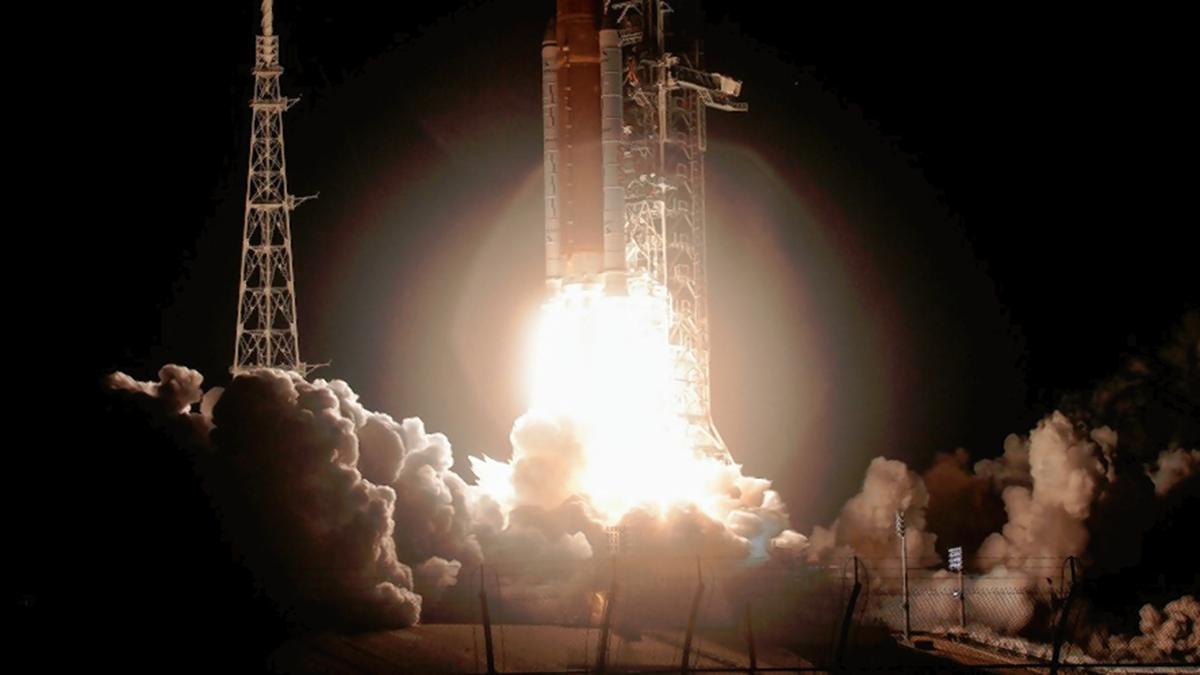
Science This Week | NASA names astronauts for Artemis II mission, new isotope of uranium found and more Premium
The Hindu
A weekly science wrap that lists the top 7 science stories from this week. The wrap includes scientific discoveries, findings and studies from India and all over the world.
From NASA announcing the astronauts for the upcoming Artemis II Mission to Dr C. R. Rao winning the 2023 International Prize in Statistics, a lot has happened in the field of science this week.
On April 3, NASA named the first woman and the first African-American ever assigned as astronauts to a lunar mission, introducing them as part of the four-member team chosen to fly as early as next year around the moon. Christina Koch, an engineer who already holds the record for the longest continuous spaceflight by a woman, was named as a mission specialist, along with Victor Glover, a U.S. Navy aviator, who was selected as the Artemis II pilot. Mr. Glover, who was part of the second crewed flight of a SpaceX Crew Dragon capsule, would become the first astronaut of colour ever to be sent on a lunar mission.
The Indian-American statistician Calyampudi Radhakrishna Rao has been awarded the 2023 International Prize in Statistics, which is statistics’ equivalent of the Nobel Prize. The citation for his new award reads: “C.R. Rao, a professor whose work more than 75 years ago continues to exert a profound influence on science, has been awarded the 2023 International Prize in Statistics. Rao’s groundbreaking paper, ‘Information and accuracy attainable in the estimation of statistical parameters’, was published in 1945 in the Bulletin of the Calcutta Mathematical Society,
While studying the atoms of heavy elements, physicists in Japan discovered a previously unknown isotope of uranium, with atomic number 92 and mass number 241, i.e. uranium-241. The finding refines our understanding of nuclear physics. What shapes the large nuclei of heavy elements take and how often (or rarely) defines the boundaries of models that physicists use to design nuclear power plants and models of exploding stars.
Scientists at the National Geophysical Research Institute (NGRI), a Council of Scientific and Industrial Research facility in Hyderabad, have reported the presence of lucrative rare-earth elements (REEs) in Anantapur district in Andhra Pradesh. These elements are key components in many electronic devices and whose industrial applications span sectors like imaging, aerospace, and defence. The REEs are lanthanum, cerium, praseodymium, neodymium, yttrium, hafnium, tantalum, niobium, zirconium, and scandium.
Scientists from the Institute of Minerals and Materials Technology (IMMT), Bhubaneswar, have estimated the quantity of rare earth elements that can be recovered from a toxic byproduct of aluminium extraction that India produces in copious amounts. Rare earth elements (REEs) are crucial components of electronic and electric systems, from the devices used to produce ‘green hydrogen’ to electric vehicles.
Plants can emit sounds that are beyond the hearing range of humans, new research has shown. These sounds, recorded and analysed by researchers at Tel Aviv University, can provide a plethora of information, particularly when it is stressed or injured. The ultrasonic sound recorded by the researchers is a click-like sound (like the popping of popcorn) at a volume similar to human speech but at much higher frequencies of 40-80 kilohertz.

Podcasts have become our best friends, especially during the Covid-19 pandemic. Whether you are cooking, sketching or going on an evening walk, there is a show that matches your mood. From horror tales to informative conversations to just two friends talking about anything & everything relatable, podcasts have become a part of our lives unknowingly. Over the years, more voices have joined this audio landscape and filled it with stories that resonate with our lives. Podcasts serve as a reminder that everyone has a story worth telling and listening to!










